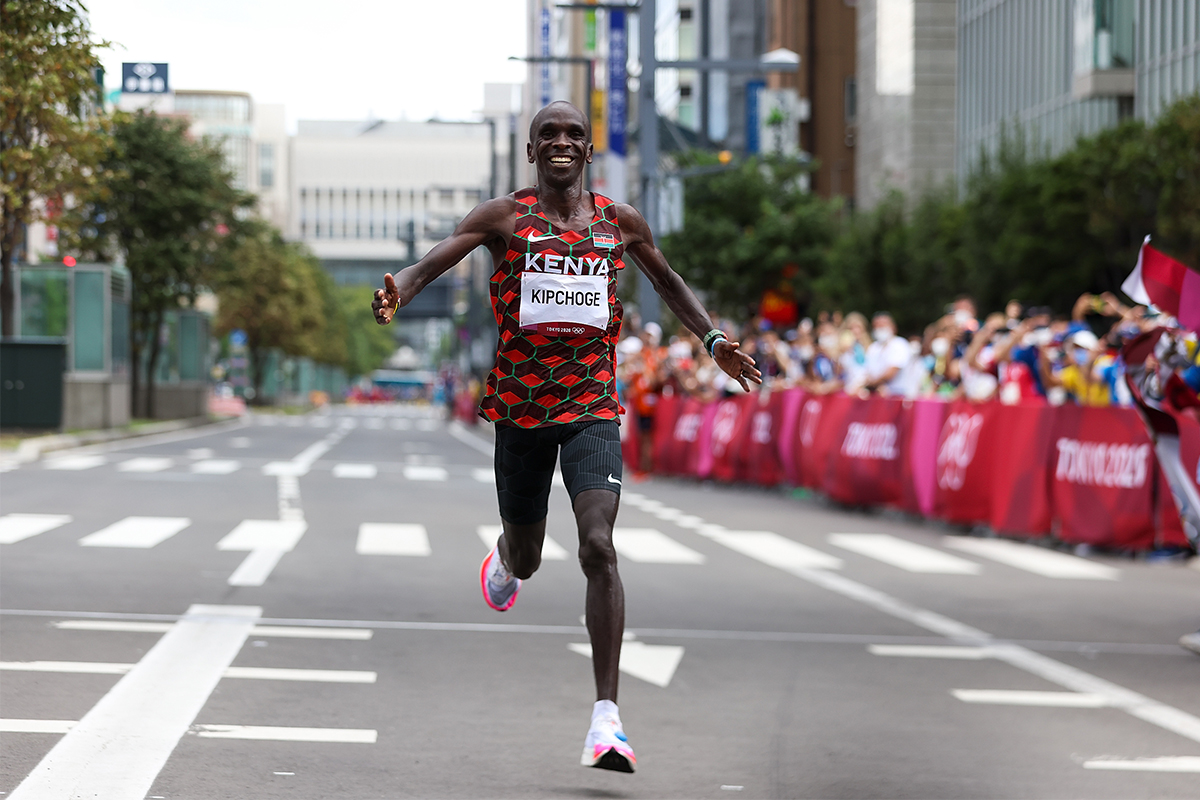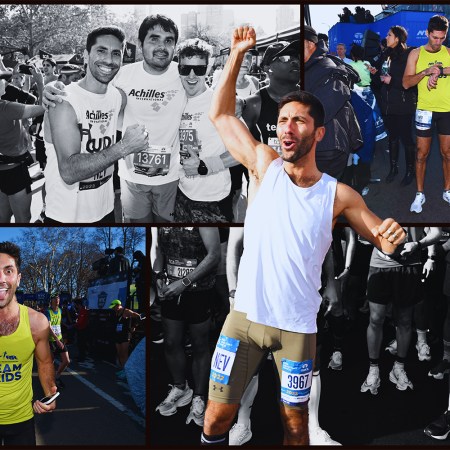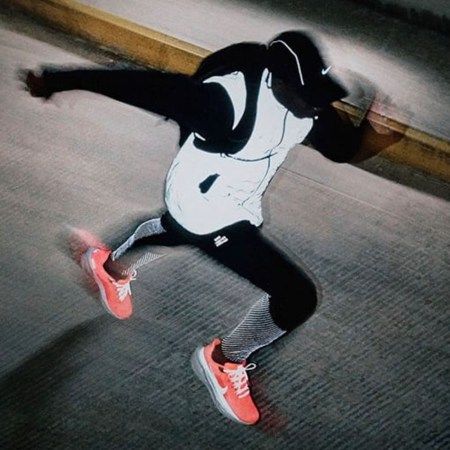As Eliud Kipchoge was closing in on marathon gold in the Tokyo Games a few weeks ago, one of the commentators said, “Less than two kilometers for this almighty legend of our sport … this almighty legend of the human species. We talk about Usain Bolt being the fastest human ever on the Earth. Well this is the man who can run the fastest marathon … an event that was inspired in 490 BC.”
A hyperbolic monologue? Sure. But the running community is simply running out of ways to describe the excellence and rarity of the 36-year-old Kenyan, who has won eight major marathons, the last two Olympic marathons, broken the 2:00:00 barrier (at the unofficial Ineos 1:59 Challenge in Vienna), and holds the all-time official marathon record of 2:01:39.
If you’re a runner looking to break five minutes in the mile, here’s a little perspective — Kipchoge can rattle off 4:40-ish miles 26 times in a row. And he doesn’t end his marathons by collapsing in a heap on the finish line. He trots over to his wife to give her a hug, a big smile on his face.
The brains over at Outside Online recently put together a panel to try and get to the bottom of Kipchoge’s GOAT status. How is he this good? When Bolt started torching the 100M record, mathematical models suggested he belonged in the 2040 Olympics, not the 2008 Olympics. His talent was decades ahead of human progress in the event.
Is Kipchoge from the future? Was he dropped here from another planet? How does he seem to be getting even better as he approaches his 40th birthday? Unfortunately, there is no easy answer — the piece refers to Kipchoge’s career as a”multifactorial phenomenon.” There are some highlights, though, namely:
- A combination of VO2 Max, lactate threshold, and running economy: This is a classic model for assessing a runner’s ability. Think high oxygen consumption, a preternatural ability to withstand lactate build-up, and flawless running form.
- His critical speed: A newer endurance metric which assesses how long a runner can withstand his top speed without “bonking,” or “dying.” Kipchoge almost never fades in races, suggesting he doesn’t hit his critical speed until the very end of the distance.
- The potential for “fatigue resistant muscles”: Another voguish idea, which suggests champion runners might have muscle fibers that don’t get as tired as yours and mine.
- Leg stiffness: Believe it or not, runners don’t want to be all that loose when pressing against the pavement. Hitting the ground with a certain level of “stiffness” makes sure the knees don’t exaggerate and over-extend. Kipchoge is a master at this.
- An efficient frame: Kipchoge is only 5’6” and 115 pounds. Light torsos with long, lean legs are undefeated in long-distance running.
- Extraneous factors: The man is from high-altitude Kenya, he follows a high-carbohydrate diet, he came from an underprivileged background (we can’t underestimate how life-changing endorsements and prize winnings would’ve been early in his career), and top of all that, he’s known for his zen-like demeanor, which helps him remain calm during races.
Casual runners are always looking for slight advantages on their road to a PR, usually in the form of training hacks or gear drops. All power to you; keep at it. But this sort of endurance research is a reminder that running really fast is a natural gift. Some men and women, like Kipchoge, are truly just built different.
We don’t have access to Kipchoge’s lab metrics, due to medical ethics, but it’s safe to say that if you were to design the perfect runner in a lab, he’d look a lot like Kipchoge. On our end, we can follow his weekly schedule, sample his diet and wear his shoes. But at the same time, it’s best that we just accept that he’s an absolutely untouchable unicorn — a runner we may never fully understood, but will appreciate forever nonetheless.
Whether you’re looking to get into shape, or just get out of a funk, The Charge has got you covered. Sign up for our new wellness newsletter today.


















